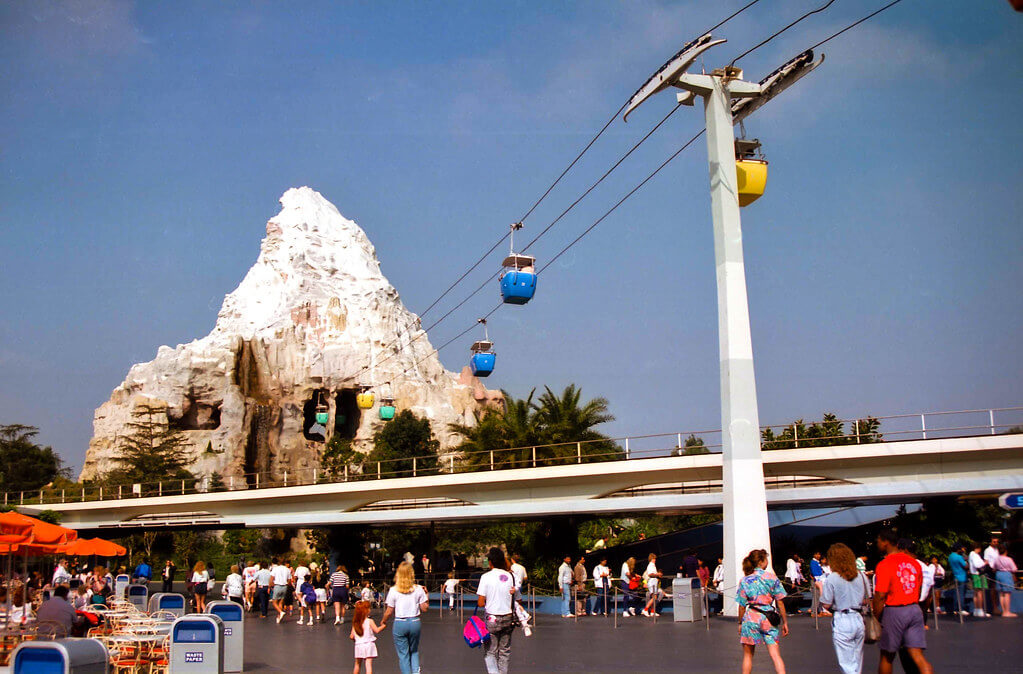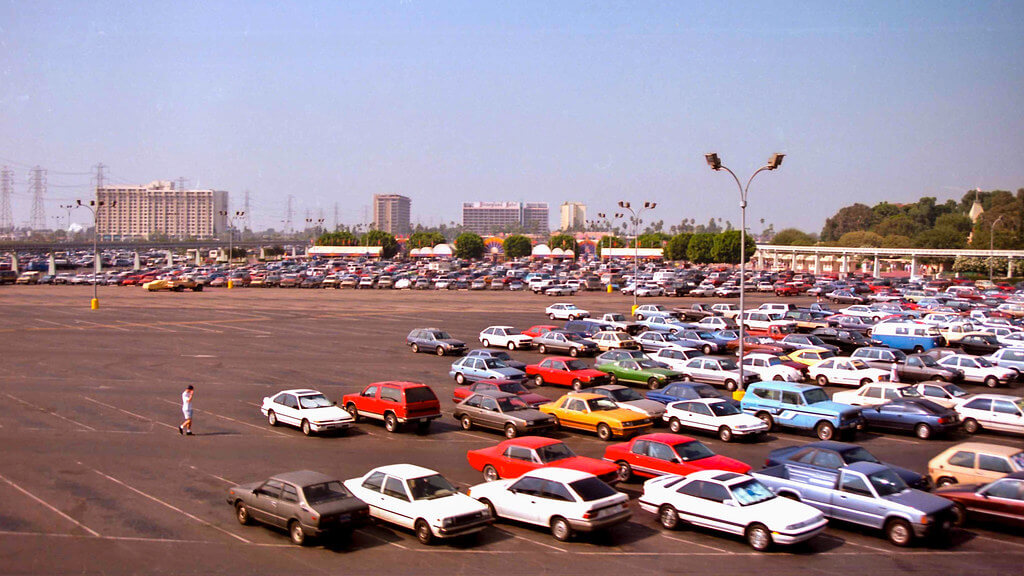Disneyland may look more like the 90’s when the park reopens, at least when it comes to the crowds and lines. New restrictions and the absence of an annual passport program is the perfect storm for a throwback — and some of the lowest attendance in decades.
Blast from the past
The “happiest place on Earth” looked a lot different back in the 90’s — and we’re not talking about the baggy jeans, fanny packs, or even the lack of a second gate. Disneyland was markedly less crowded back then. Sure, new attractions like Indiana Jones Adventure and the Main Street Electrical Parade drew big crowds, and it was still packed on holidays and during the peak season, but it just didn’t feel… unbearable. This “back in my day” sentiment is shared by many Disneyland fans who miss this bygone era of a simpler, less-hectic park experience.
Damn … Disneyland limited to 15% capacity sounds absolutely lovely. As a kid that grew up CA during the 80's and 90's I spent a lot of time in a nearly-empty Disneyland.
My sister and I road Gadget's Go Coaster 3-4 times in a row without having to exit once.
— Ben Golus (@bgolus) March 17, 2021
It *was* fun. In the 80's and early 90's, before APs filled the place on non blackout days. You could play hooky from school/work, DL opened at 10:00 AM. There were no lines, everyone was happy, calm, peaceful. Now it's a crowded mess. Get rid of APs and solve the problem.
— Steve Fulton – Doublebuffer Flip (@fultonbot) January 16, 2019
Used to be better in the 90s/early 2000s before it was super crowded all the time (disneyland at least). They started offering discounted passes with payment plans for southern california residents which made it usually an unbearable nightmare to go.
— Rachuske (@Rachuske) September 9, 2020
If you had a feeling that Disneyland had become more and more crowded every year, you weren’t wrong. Park attendance has steadily increased over the last few decades. In 2018, Disneyland’s annual attendance reached almost 19 million, a whopping 50% increase from park’s average just in the early 2000’s. This trend is expected to change though, as Disneyland recovers from a year-long shutdown and grapples with new restrictions upon reopening. It’s the cancellation of its beloved annual pass program, however, that may have longtime park-goers feeling like it’s the 90’s again.
“Ghost Town” Disneyland
When Disneyland reopens, the park will follow new guidelines like reservations and in-state guests only. The biggest restriction, however, will be a limit on the park’s maximum capacity, just 15% initially. Those are attendance levels Disneyland hasn’t seen since the park opened in 1955. In the modern era, it would look much like a rainy day: a nearly deserted park with barely any lines. We’re talking 5-10 minute waits, or even walk-on’s for many rides. When Disneyland is allowed to increase its capacity to 25-35%, it will start to feel more normal again, like a typical non-crowded day at the park, but still well below average levels.

Disneyland is projected to be mostly marked as a “Ghost Town” when it reopens, according to the Disneyland Crowd Calendar, a rating usually given to only a select few days of the year. “Ghost Town” days had become increasingly rare before the park shutdown, as a host of new attractions, special events, and ticket promotions kept the parks busy almost year-round. This departure from a true “off-season” boosted attendance to record levels in recent years, and all hope for a more manageable, 1990’s-esque Disneyland experience was lost… until now.
Bye-bye, APs
The biggest driving force for the crazy crowds and long lines at Disneyland isn’t a new ride or high-demand seasonal event — it’s the annual passholders. The annual passport program was popular, perhaps too popular, and made up a significant portion of the park’s daily attendance. If you needed proof of just how influential APers were to crowd levels, look no further than the opening of Disneyland’s newest expansion, Star Wars: Galaxy’s Edge.
The highly-hyped land was supposed to attract an onslaught of guests to Disneyland when it opened in the summer of 2019. Fearing the worst, park officials took unprecedented steps to rein in the expected surge in attendance, including requiring reservations and placing capacity limits on the new land. The most drastic measure, though, was the months-long blockout of all annual passes to Disneyland, except the very highest tier. The result? A mostly dead park.

The lackluster premiere of Galaxy’s Edge was evidence of not only the effectiveness of crowd restrictions but also an AP program that had grown dated and inefficient. For Disneyland veterans, the impact passholders imposed on the park had become more and more obvious over the last decade or so. Membership swelled to new highs, as local residents flooded into the Southern California AP tiers. Still, an annual pass to Disneyland was notoriously pricey — and downright unaffordable for many — but it wasn’t until the introduction of the monthly payment plan that AP membership really took off. AP blockout dates, intended to more evenly spread attendance throughout the week, eventually had sort of the opposite effect. For instance, on days when the lowest tier (and most popular) APs were blocked out, Disneyland was typically far less crowded. This led to many blocked-out weekends, and even some holidays, being the least crowded days of the week to visit, while non-blockout dates saw peak crowds.

The sunsetting of the annual pass program marks an important turning point in park attendance moving forward. Disneyland will reopen to no passholders at all, making way for a much more manageable park even after all the restrictions are lifted. New membership offerings will be announced soon, and an AP program will almost certainly return in some form given its popularity with locals. Disney says it’s developing a new program that will “utilize consumer insights to deliver choice, flexibility and value for our biggest fans.” It’s still unclear exactly what this will look like, but expect a more crowd-efficient program to take its place (along with probably another price hike, of course). New APs will most likely take advantage of a demand-based system like the Flex annual pass offering, which may require passholders to make advance reservations before visiting.

For now, Disneyland is anticipated to pull record low crowds following its reopening, but the lack of passholders will leave a more persistent void in attendance the park hasn’t seen in decades. The eventual relaunch of a revamped AP program — and the rebuilding of membership — is also expected to take some time before it’s back to anywhere near its previous levels. So until then, it just might be time to break out the fanny packs and denim. A Disneyland with lines short enough to make you feel like you’re back in the 90’s may soon become a reality, at least for a while.
Time to find your hair Scrunchie!! Get those Bright Colors on and Fannie pack!!! #90s #Disneyland #DisneyWorld pic.twitter.com/3PjwdIYmIX
— Big Daddy’s Bear Cave (@WhiskeyBearCave) March 25, 2020
Did you go to Disneyland in the 90’s? What was your experience with the crowds and lines then? How does it compare to now? Be sure to let us know in the comments below!
